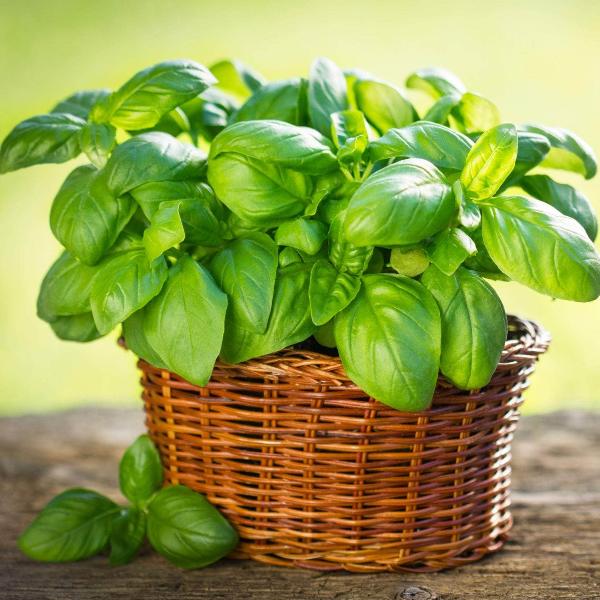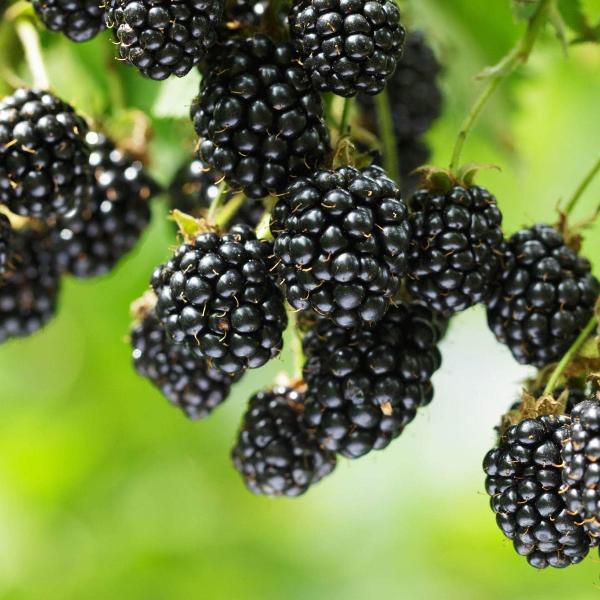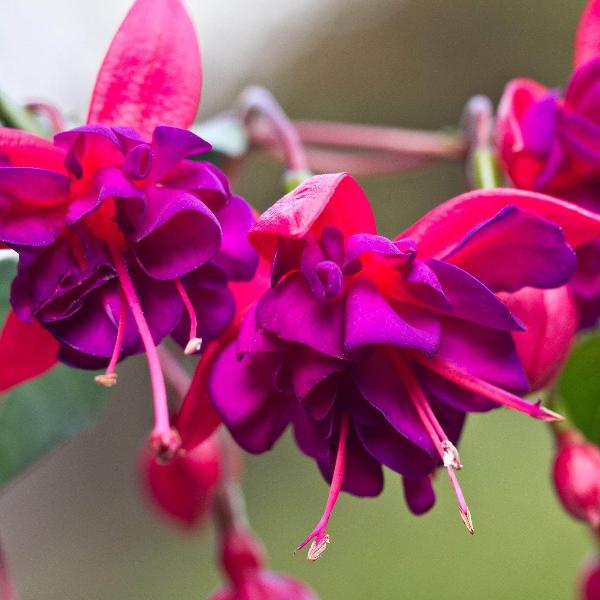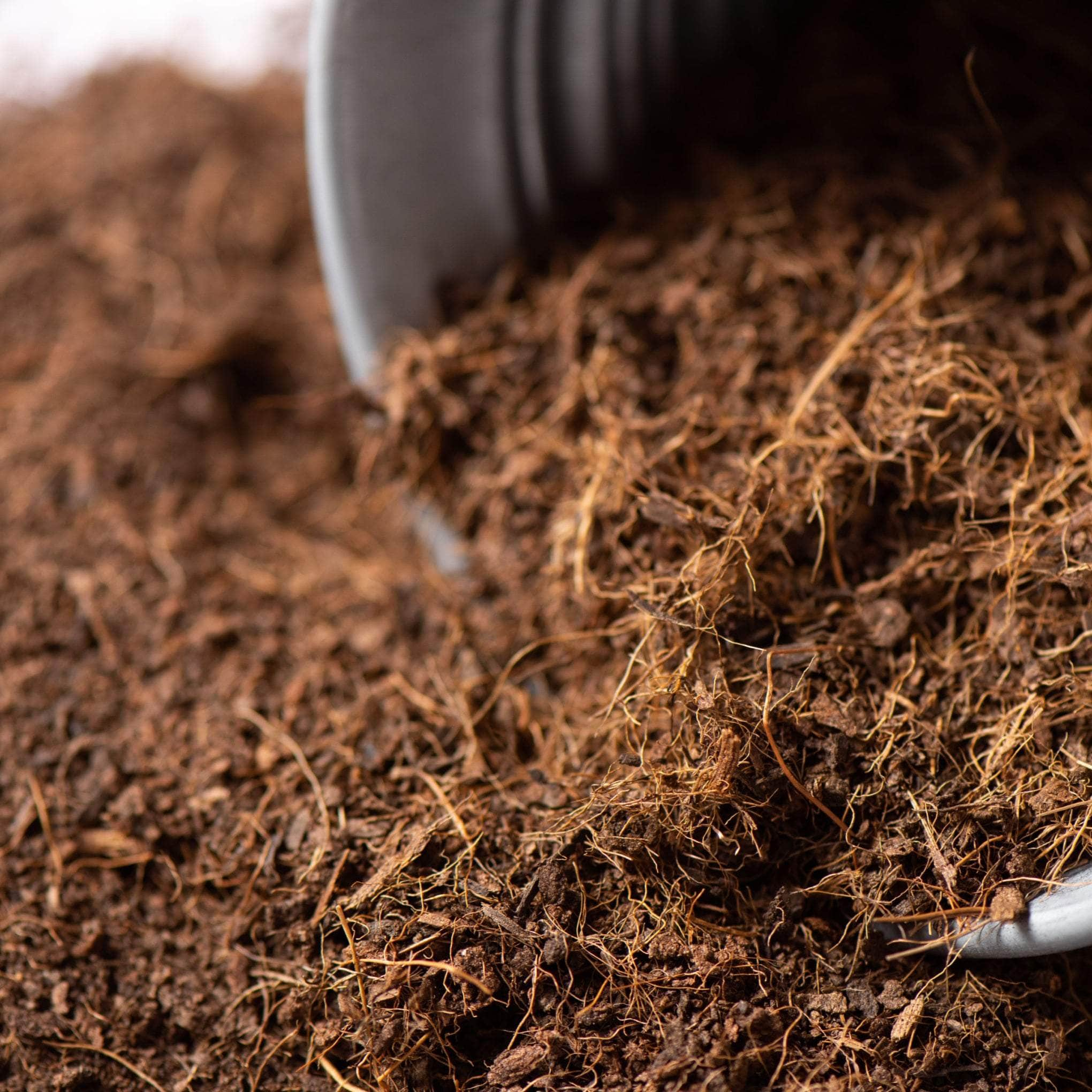The Comprehensive Guide to Growing Irises: From Planting to Blooming
Welcome to our comprehensive guide on growing irises, a flower that adds a touch of elegance and colour to any garden. Whether you're a seasoned gardener or a green-fingered novice, this guide will provide you with the knowledge you need to plant, nurture, and enjoy these beautiful blooms. From understanding the different types of irises to knowing the best time to plant iris rhizomes, we've got you covered.
We'll delve into the importance of soil preparation, how to maintain healthy plants, and even how to deal with common pests and diseases. But that's not all. We'll also guide you through the process of dividing and replanting your irises, and explore the benefits of growing irises in pots.
So, whether you're looking to create a stunning iris garden or simply want to add a splash of colour to your patio, this guide is for you. Let's embark on this horticultural journey together, and by next spring, you'll be enjoying the fruits of your labour with a vibrant display of irises.
Understanding the Iris: An Introduction

Dive into the world of irises, a flower zone that's a feast for the eyes. These captivating blooms, with their rich history and diverse types, are a gardener's delight. From the tall bearded iris to the iris gypsy beauty, each variety brings its own charm to the garden.
In this section, we'll explore the fascinating world of irises, providing you with a comprehensive flower guide. We'll delve into the beauty of the iris plant, its different types, and how to cultivate a healthy plant for a vibrant iris garden. So, let's embark on this colourful journey together.
The Beauty of the Iris
Parading in a stunning spectrum of colours, the iris flower stands as an exquisite testament to nature's artwork. Their blooms are rich and varied, bestowing upon gardens a charm that is uniquely their own. Often referred to by the name of the Greek goddess of the rainbow, they do justice to their namesake with their radiant hues.
These beautiful flowers are distinguished by their intricate markings that mirror the meticulous brushstrokes of an artist. The floral tapestry they weave is one of sumptuous beauty, adding a touch of elegance to any green space they adorn.
Being part of different types including border and bulb irises, they offer a range of growing opportunities. Whether you wish to tinge your border with their vibrant colours, or plant their bulbs to witness seasonal adornments, there is an iris for every garden and gardener out there.
The significance of irises also stretches back to ancient times, boasting a long and rich history intertwined with royalty, thanks to their symbol, the Fleur-de-Lis. This historical association adds an alluring aristocratic touch to the flower, enhancing its attraction.
Types of Irises: Bearded, Dutch, and More
Bearded Iris (Iris germanica): Also known as the German iris, it's the largest group among irises. This Mediterranean native is recognised for its caterpillar-like line of hairs on its lower petals. It thrives in dry conditions and presents an array of colours.
Dutch Iris: These brightly-coloured irises bear large flowers on tall, sturdy stems. Ideal as cut flowers, they bloom in summer providing eye-catching hues in the garden.
Siberian Iris (Iris sibirica): A resistance variety that adds a delicate beauty to the palette of the iris garden. It can grow well in any reasonable soil and showcases showy flowers.
Japanese Iris (Iris ensata): As heavyweight feeders, they produce large, flat blooms, making them an excellent choice for moist areas around ponds.
Bulbous Iris: These are beloved for their seasonal burst of colour though their flowers last for short periods. They include species like Iris danfordiae and Iris reticulata, which bloom as early as February.
Moisture-loving Iris: Perfect for margins of ponds, they need soil that stays moist and don't dry out at any time of the year. Iris ensata, Iris laevigata, and the yellow flag iris, Iris pseudacorus, are popular examples of this type.
Understanding the type of iris is the first step towards cultivating a healthy plant and, subsequently, an enchanting iris garden.
When and How to Plant Irises

Planting irises can be a rewarding experience, especially when you see the beautiful blooms in your garden. However, knowing when and how to plant irises is crucial to ensure their healthy growth. This section will guide you through the best times to plant different types of irises and provide you with some practical tips on how to plant them properly.
Whether you're a seasoned gardener or a beginner, understanding the planting process can make a significant difference in your iris garden. From the ideal time to plant iris bulbs to the step-by-step guide on how to plant them, this section will equip you with the knowledge you need to grow vibrant and healthy irises.
The Ideal Time to Plant Iris Bulbs
The question of "when is the best time to plant iris bulbs" often buzzes in the mind of a gardener. The timing takes cues from two significant events in nature, the first frost and the arrival of early autumn. Captured in the US planting tradition, iris bulbs are ideally planted from late summer through to the early autumn. This period offers an opportunity for the plant's rhizome to adapt to its new environment, firmly ground itself, and sprout a healthy root system before the arrival of the first frost.
It's worthwhile noting that bearded iris varieties have a tendency to become dormant in early to mid-summer, and as a result, planting them as close to autumn as possible becomes essential. While we typically prefer to synchronise planting with 'ideal' timelines, if you receive your iris rhizomes or container-grown irises at an earlier point in the year, don't delay planting them. They are better off settling into the ground than waiting for the perfect time.
For our UK growers, planting bulbous irises takes place from September to November. Some species, like the Iris reticulata, bring forth their bloom as early as February, hence the importance of timely planting to avoid late flowering.
In summary, late summer to early autumn stands as the perfect window to plant your iris bulbs. The overriding rule is to plant as soon as possible and let Mother Nature take her course.
Step-by-Step Guide to Planting Iris Bulbs
Here's a concise and, by no means, trivial step-by-step guide on how to plant iris bulbs, derived from experience and expert advice to help you become successful in your iris-growing venture.
Dig the Hole: Take your spade and dig a hole. It should be sizeable enough to house the iris bulb comfortably. An ideal measure would be around 15cm deep, a good thrice of the bulb's depth. This depth promotes the likelihood of the bulb reflowering reliably in the next spring.
Preventive Measures: To keep your iris bulbs in good health, put some bonemeal and horticultural grit at the bottom of the hole. These enrich the soil and create a conducive environment for your bulbs to thrive.
Planting Time: It's time to plant the iris bulb. Remember, the pointed side should always face up. Ensure there's ample space between the bulbs - approximately twice of their width.
Final Touches: Cover the hole with soil and pat it down to ensure it's firm. If you're planting bearded iris bulbs, remember to leave the rhizome close to the soil surface; however, don't completely cover it prevent rot.
Keep in mind that successful growth largely depends on the sunlight they are exposed to and the care they get as they grow. Going wrong with these instructions could jeopardise your bulbs, leading to lesser growth or worse, their non-bloom. Incidentally, deep planting remains a frequent mistake you'd rather avoid.
Lastly, take note of the subtle signs your iris bulbs give you, so you know when to water them, when to deadhead, and how to store them, especially once they're done blooming.
You're now good to go! The journey of growing exquisite irises from bulbs awaits you. It's time to get your hands dirty. Happy planting!
Preparing the Soil for Iris Planting

Before you can even think about planting your irises, it's crucial to prepare the soil properly. This step is often overlooked, but it's the key to ensuring your irises thrive and bloom beautifully. The soil preparation process involves several steps, including removing plant debris, adding fertilizer, and ensuring the soil has the right composition for iris growth.
The process of preparing the soil for iris planting is not as daunting as it may seem. It's all about creating the perfect environment for your irises to grow. This involves ensuring the soil is well-drained, adding organic matter to enrich the soil, and using bone meal to aid in root development and flower production. Remember, the goal is to create a hospitable environment for your irises to thrive.
The Importance of Soil Preparation
Just like building a firm foundation for a house, soil preparation plays a pivotal role before planting irises. By preparing the soil, you set the stage for robust plant growth and stunning, abundant blooms. With irises, this stage is especially crucial due to their need for excellent drainage and their sensitivity towards continuous moisture exposure.
Soil preparation directly affects the plant's ability to access essential nutrients. You pave the way for the iris to optimally utilise the organic matter and fertilizer you add, potentially boosting their growth and bloom performance. Ignoring soil prep can lead to a stunt in the growth of your irises.
A well-prepared soil also eradicates the risk of detrimental soil-borne diseases, such as bacterial soft rot in irises. Furthermore, you create a hospitable environment for beneficial organisms, like earthworms, which promote a healthy, well-aerated soil structure.
Another fundamental aspect of soil preparation is the removal of plant debris, a hassle-free way of preventing unwanted pests or diseases from hitching a ride and attacking your irises.
Moreover, the use of bone meal, a rich source of phosphorus, aids in root development and flower production. However, use caution to avoid excess nitrogen that may encourage leaf growth at the expense of blooms.
How to Prepare the Soil for Iris Planting
Eliminate Plant Debris: Start by removing weeds and other plant debris from the planting area. This not only prevents competition for nutrients but also reduces the chances of disease transmission.
Enhance Drainage: Irises thrive in well-drained soil. If your area has heavy clay soil, you'll need to modify it to improve drainage. This doesn't rule out the potential for excellent iris growth, some have been known to flourish in alkaline soils as well.
Enrich the Soil: If your soil is dry or lacking in nutrients, it's time for some organic matter. Well-rotted compost can be mixed into the soil to increase fertility and improve structure.
Precise Planting: You should plant iris rhizomes 20-40cm apart depending on the type of iris. The top of the rhizome needs to be exposed to the sun, so don't cover it completely with soil, otherwise, it may rot. Consider soaking bare root rhizomes briefly before planting for better growth.
Check Soil Composition: As much as irises love the sun, they equally appreciate soil rich in specific nutrients. When you prepare the soil, add fertilizer, but be careful to avoid excess nitrogen. A balanced fertilizer or bone meal works best when planting iris.
In summary, preparing the soil for iris planting might seem a bit daunting, but the benefits far outweigh the efforts. A well-prepared soil creates an inviting environment for Iris rhizomes, increasing their chances of growing into beautiful, blooming flowers. One last point to note is that if you are located in a region with harsh weather conditions, consider mulching to protect your irises during extreme temperatures but remember to remove it once the weather warms up.
Caring for Your Iris Plants

Caring for your iris plants is a rewarding task that requires a keen eye and a gentle touch. These beautiful blooms are not just pleasing to the eye, but also a testament to your gardening skills. However, they do require a certain level of care to ensure they remain healthy and vibrant.
From maintaining good air circulation to dealing with common pests and diseases, every aspect of care contributes to the overall health of your iris plants. With the right approach, you can ensure your irises thrive and continue to add beauty to your garden.
Maintaining Healthy Iris Plants
Maintaining the health of your iris plants requires vigilance. You need to ensure good air circulation, quality soil, and regular watering.
The healthy growth of irises is greatly dependent on how well air can circulate through the plant. It includes its leaves and rhizomes, which must not be bunched up too tightly. This promotes better health and prevents many common plant diseases.
The relationship between irises and soil is much like any loving relationship - both parties need to contribute. For irises, a rich and well-draining soil is conducive for growth. It acts as the foundation that nourishes the plant, ensuring the rhizomes are healthy and do not rot.
Beyond providing perfect living conditions, caring for your iris plants means actively warding off threats. Over-fertilisation, especially with high-nitrogen fertilisers, can lead to luscious looking leaves but often at the cost of blooming.
All living things need attention and care, and your iris plants are no different. Make the effort, and you'll see the results in the form of thriving, healthy plants.
Dealing with Common Iris Pests and Diseases
In your journey of growing Irises, it's wise to plan for potential challenges in the form of pests and diseases. Let's dive into some of the most common ones and learn how to tackle them.
Leaf Spot: A common bacterial or fungal disease, predominantly in Bearded Irises. It discolours leaves with distinctive spots that eventually turn brown. At the first signs, sever the infected leaves to prevent further spread of infection. If it's a bacterial leaf spot, sadly, your only recourse would be to discard the affected bulbs to prevent propagation.
Slugs and Snails: This soft-bodied crew loves the lush foliage of Iris plants. A well-known and effective remedy is the 'beer trap'. By placing containers of beer near your plants, slugs and snails, which are strangely attracted to beer, will fall into the containers, ensuring a pest-free garden.
Iris Borer Moth: This insect can be quite destructive as it targets rhizomes. The moth lays eggs on the leaves and petals. When hatched, the larvae burrow into the plant, making their way towards the bulb. If the leaves show brown streaks, your Iris may have fallen prey to this pest. Act by cutting away the affected parts and dip the rhizome in a bleach-water solution (1:4 ratio). Once dry, replant after a few days.
Keeping a close eye on your Irises for these issues contributes towards a healthier, more robust plant. Remember to maintain good air circulation around your blooms to combat fungal diseases. Be mindful to avoid excess nitrogen in the soil before a hard frost. And most importantly, look always to expose the rhizome to the sun. These subtleties in plant care go a long way to thwarts many of these problems in the first place.
Dividing and Replanting Irises

In the world of gardening, the beauty of irises is unparalleled. Their vibrant colours and unique shape make them a favourite among garden enthusiasts. However, to ensure their continuous bloom and vitality, it's crucial to understand the process of dividing and replanting irises.
This section will guide you through the steps of how to grow irises by dividing and replanting them. It's a simple yet essential process that ensures your irises remain healthy and continue to bloom year after year. Whether you're a seasoned gardener or a beginner, this guide will provide you with the knowledge you need to keep your irises thriving.
When and Why to Divide Your Irises
Emerging from the earth's cradle, irises unfurl their petals to the year once more, a reminder of nature's cycles. One integral element of this cycle is the division of irises, a process that ensures their health and flowering efficiency.
Dividing your iris is not merely a yearly routine but a vital cog in the wheel of growth. The best time to divide irises is right after they have delighted the senses with their annual bloom, usually around July. The reason behind this timing echoes in the science of plants.
The purpose of this act is two-fold: to stimulate the continuous production of healthy rhizomes, the underground portion of the stem from which new growth springs, and to ensure these rhizomes remain undisturbed, leading to consistent flowering every year.
The timing of their division is significant, as the magic happens in the summertime when the flower cells develop. Delaying the process till the year-end can have adverse effects. By preserving the healthiest irises for division, you ensure both their survival and their stunning return the following year.
In creating space, you pave the way for next year's growth and pay homage to the cyclical life of these resilient flowers. Remember, division isn't a destructive process, but a necessary step in facilitating the unfurling of irises year after year. Tending to nature in this way, you encourage not only the bloom of irises but your own growth as a gardener.
How to Divide and Replant Irises
Dig Up the Iris Clump: After your iris finishes blooming, carefully dislodge the entire clump of irises. Be gentle during this process to avoid damaging the rhizomes.
Separate the Rhizomes: Identify the original "mother" rhizome (the initial one you planted) and remove the newer offshoot rhizomes. Dispose of the mother rhizome. You'll find the offshoot rhizomes more vigorous and ready to produce stunning flowers.
Inspect and Prepare the Rhizomes: Examine each rhizome for signs of disease. Look for soft spots, rotting tissue, or other obvious abnormalities. Any damaged or infected parts must be removed and discarded to prevent further infection.
Replant the Healthy Rhizomes: After selecting only the healthiest rhizomes, the next step is to replant them. This can be in a different bed, back where they were (with fresh soil), or you can even share some with friends.
Care for the Rhizomes: After planting, focus on maintaining a conducive environment for your irises to prosper. Water them regularly and ensure your soil is continually moist, yet not waterlogged. Prevent rot by averting overly damp conditions.
Remember to enrich your garden by planting bearded iris bulbs. Just a few seasons of mindful care, and you'll be blessed with a spectacular iris bloom show year after year.
Growing Irises in Pots

Growing irises in pots is a delightful gardening venture that offers a myriad of benefits. It's a versatile approach that caters to both gardening enthusiasts with sprawling green spaces and those with limited outdoor areas. This section will delve into the ins and outs of nurturing irises in pots, from the benefits it offers to the step-by-step guide on how to successfully plant and care for your potted irises.
Whether you're a seasoned gardener or a novice, growing irises in pots is a rewarding experience. It allows you to bring the vibrant beauty of these blooms to your doorstep, balcony, or even indoors. With the right pot, soil, and care, you can enjoy the stunning display of irises in full bloom. Let's explore how to make the most of growing irises in pots.
The Benefits of Growing Irises in Pots
Growing irises in pots presents several enticing benefits. Firstly, it allows for some degree of portability. If you worry about a lack of sunshine exposure in your garden, owning potted irises may be your solution. Simply move them wherever the sun is positioned, ensuring they get their needed full sun or part shade, depending on the variety.
The possibility to grow irises in pots, more specifically Iris reticulata and Iris histrioides, eradicates any concern about space. Those who reside in homes with limited gardening space can welcome the beauty of these blooms into their setting. They are not demanding in terms of size and elaborate gardening setups, making them an ideal choice for enthusiasts looking to bloom a piece of nature right at their doorsteps.
Irises in pots also allow more control. Issues like bulb rot or waterlogging can often derail the best gardening intentions, but with a pot offering good drainage, you have more influence over the growing conditions of your iris. You have also got the luxury to experiment with displays such as bulb lasagnes in a deep pot or shallow bulb trays topped with foraged moss to complement your home décor.
Lastly, it’s easier to preserve and store your iris bulbs at the end of the season when they’re grown in pots. This capability assures a continued line of blossoming irises as you can lift and store the bulbs, ready for planting when the time to plant iris arrives the following season.
In summary, growing iris in pots offers flexibility, better control over conditions, room for creativity, and an opportunity for longevity - all of which contribute to the rewarding gardening journey.
How to Grow Irises in Pots
Choose the Appropriate Pot: First thing's first, you will need to select an appropriate pot for growing your iris. Opt for one that offers plenty of drainage holes; this aids in preventing the iris rhizomes from sitting in water and rotting. Dwarf growing irises like 'Iris reticulata' and 'Iris histrioides' are great choices for pots.
Use the Right Soil: The type of soil you use is just as crucial for the health of your iris plants. A premium, free-draining potting mix will do the trick. The potting mix should be rich, yet not too heavy. Remember to have the top of the rhizome at or slightly above the level of the potting mix and the root-facing downwards.
Plant the Iris Rhizome: This is the crucial part – the time to plant iris rhizomes in your pot. Plant the bulbs about 7cm apart and 7cm deep. Ensuring a good distance between your bulbs will allow healthy growth and avoid overcrowding.
Position the Pot Correctly: Post planting, position the pot where it can get plenty of sunlight as iris plants need full sun to bloom vibrantly. They can tolerate part shade, but full sun is ideal. If you're concerned about inadequate sunlight, the pots can be conveniently moved to track the sun's position.
Watering and Fertilisation: Lastly, water in your iris rhizomes, and don’t forget to fertilise once the shoots start to appear. Regular watering and adequate fertilisation will ensure that your Iris blooms are healthy and colourful.
Growing iris in pot is an excellent choice if you have limited gardening space or want flexibility with placement. It's quite simple to learn how to plant bulbs in pots, especially with these steps in hand. A flowering pot of iris can surely brighten up any corner of your home or garden.
Frequently Asked Questions about Growing Irises

Growing irises can be a rewarding experience, but it's not without its challenges. Whether you're a seasoned gardener or a novice, you may find yourself with questions about how to grow irises, when to plant them, and how to ensure they bloom beautifully. That's why we've compiled a list of frequently asked questions about growing irises.
This section aims to provide you with the answers you need to cultivate a thriving iris garden. From understanding the best time to plant iris rhizomes to dealing with common issues, we've got you covered. So, let's delve into the world of irises and help you grow a healthy plant that's a feast for the eyes.
Common Questions about Iris Planting and Care
When is a good time to plant iris?
Different varieties of irises have different planting times, usually divided into spring-flowering and summer-flowering types. Most common is the summer-flowering Dutch irises and Siberian irises which are typically planted in the mid to late autumn.
How to plant iris?
Iris rhizomes should be planted at soil level or slightly below, with the root side facing down and the stem side up. Avoid covering the top of the rhizome with soil or mulch to prevent rot.
What are the best conditions for iris garden?
Irises generally thrive in full sun. However, in hot summer climates, it's beneficial to cover the rhizomes lightly with an inch of soil for protection.
What are common issues faced when growing irises?
Several pests and diseases such as slugs, snails, or the iris borer moth can affect your irises. Additionally, a common mistake is planting the iris rhizomes too deeply, which can prevent the plant from blooming.
What is the process for healthy plant growth of irises?
Once shoots emerge from the iris rhizomes, it's best to water and fertilise your iris well to further ensure healthy plant growth.
Closing Thoughts on Growing Irises

Growing irises can be a rewarding experience, offering a vibrant display of colour in your garden year after year. With the right care and attention, these hardy plants can thrive, providing a stunning spectacle from early spring to late summer. Remember, the key to a healthy iris garden is good air circulation, regular watering without over-saturating, and diligent pest and disease management.
Whether you're planting your first iris rhizome or dividing your existing plants, this comprehensive guide should serve as a valuable resource. From understanding the best time to plant iris bulbs to dealing with common pests and diseases, we've covered all the essential details to help you cultivate a thriving iris garden. In conclusion, irises are a beautiful and resilient addition to any garden.
With their diverse range of colours and sizes, they offer something for every gardener. So why not give them a try?
You might just find that these stunning flowers become a favourite in your garden.










